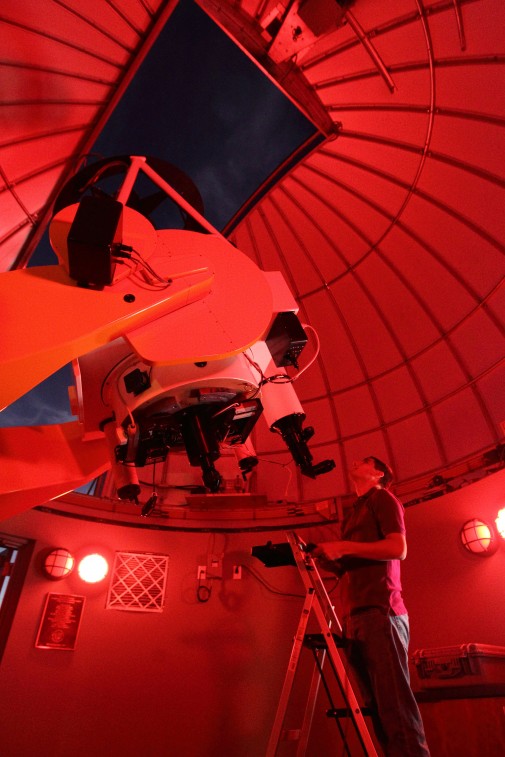Viewing Features Saturn, Five of Its Moons
By
Westmont

The ringed planet Saturn is expected to dazzle stargazers at a free, public viewing with the powerful Keck Telescope Friday, May 18. The event, which begins about 8 p.m., lasts several hours. The observatory opens its doors to the public every third Friday of the month in conjunction with the Santa Barbara Astronomical Unit, whose members bring their own telescopes to Westmont for the public to gaze through. In case of inclement or overcast weather, please call the Telescope Viewing Hotline at (805) 565-6272 and check the Westmont website to see if the viewing has been canceled.
“If the seeing is good, we should be able to see the large gap between Saturn’s A and B rings — the Cassini Division,” says Thomas Whittemore, Westmont physics instructor. “We should also be able to see five of Saturn’s moons bracketing the planet: Titan, Dione and Enceladus — along with Tethys and Rhea.”
Globular clusters are beginning more visible as we approach summer. “Among the ones we’ll target will be M3 in Canes Venatici,” Whittemore says. “M3 was discovered by Charles Messier in 1764 and is probably one of the most studied globular clusters. It contains an unusual number of variable stars and lies about 35,000 light-years from Earth.”
The Keck Telescope, a 24-inch reflector, will also aim to several galaxies overhead, including the Leo I group of galaxies: M95, M96 and M105.
“The Leo Triplet lies some 38 million light-years away,” Whittemore says. “Although M95 and M96 are face-on spiral galaxies, M105 is an elliptical galaxy, believed to contain a super-massive black hole.”
The Keck Telescope is housed in the observatory between Russell Carr Field and the track and field/soccer complex. Free parking is available near the baseball field.
Filed under
Campus Events, Campus News, Observatory, Press Releases